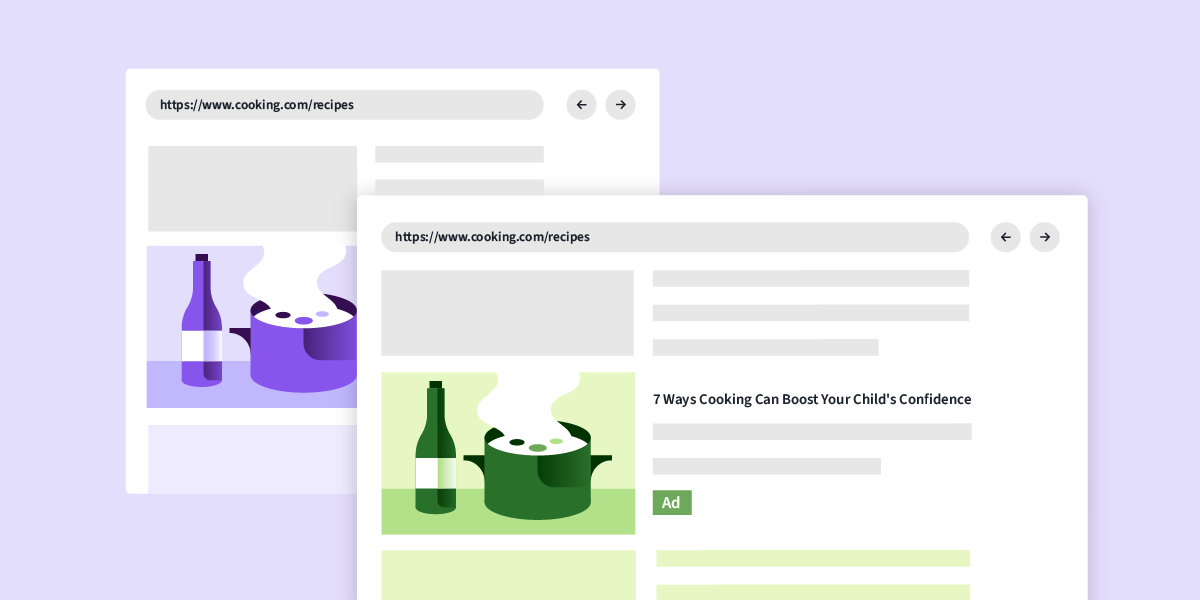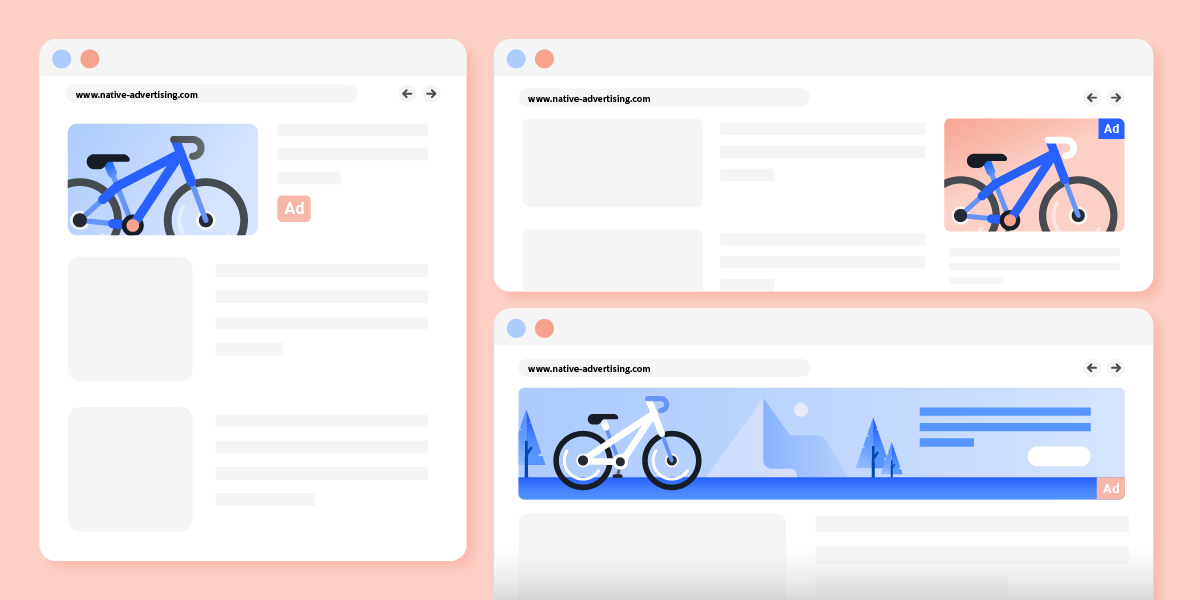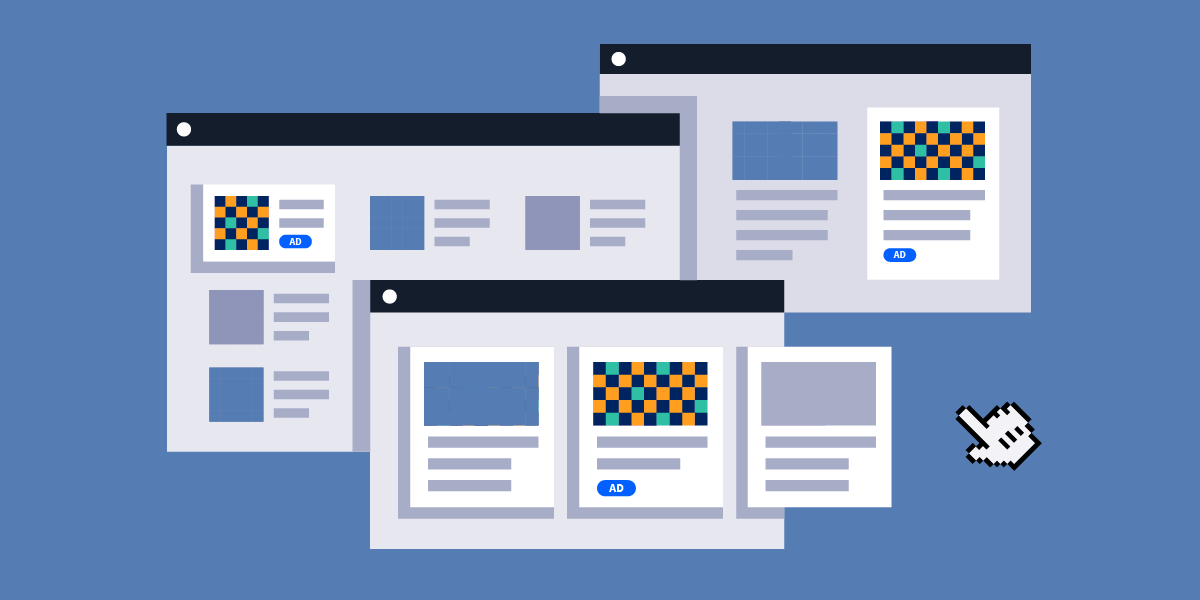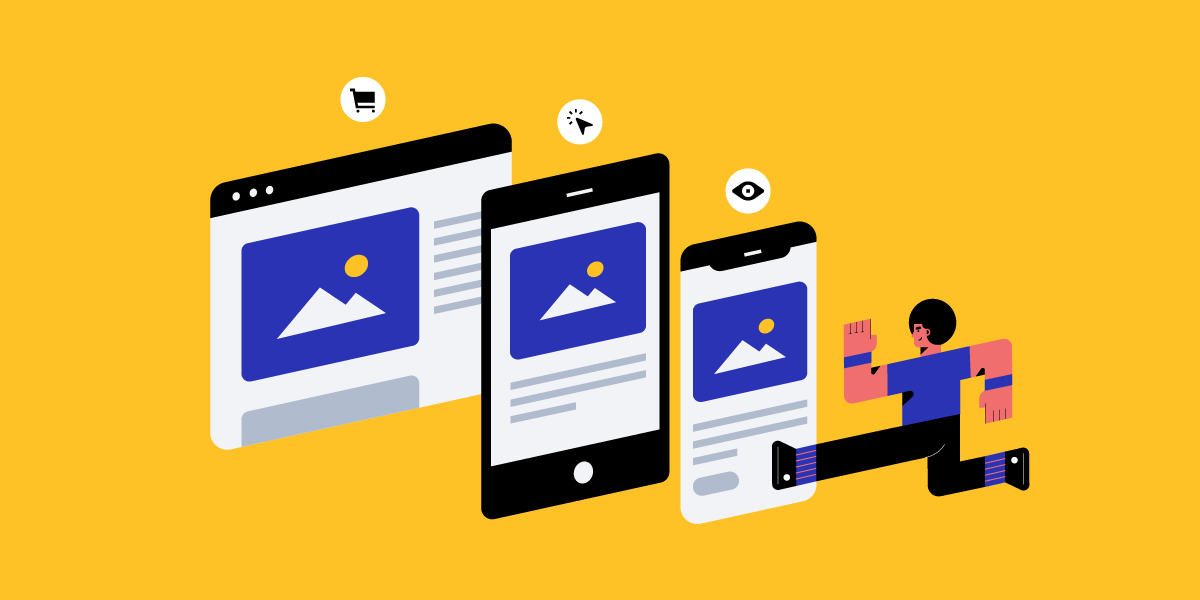A few years ago, native advertising was a shiny new advertising strategy that could be used as a primary marketing medium. Today, it’s considered a common channel in media mixes, and is often leveraged as part of a larger multi-channel strategy.
In 2023, US spend on native ads grew by 12%, year over year. This shows that despite being one of the “classic” programmatic advertising channels, investment in native continues to grow as advertisers benefit from this tried-and-true strategy.
Native advertising matches the look, form, and feel of the media format that they appear in. Unlike banner or display ads, native ads don’t really look like ads at first glance. They perfectly blend into the content that a user is viewing online, which avoids being disruptive to the user’s experience.
Read on to learn the most common native advertising formats available for your programmatic advertising campaigns. And walk away with 6 essential tips for developing your native ad creative, so that you can create native ads that deliver results.
Native Advertising Formats to Know
Before we dive into tips for native ad creative, let’s go over the 3 most common native ad formats for programmatic campaigns.
1. In-Feed Native Ads
Pioneered by social platforms, in-feed native advertising is the most common form of native ad. The primary reason for its wide adoption is its “mobile-first” approach and ability to drive users to advertisers’ owned media properties. It includes promoted listings and paid results.
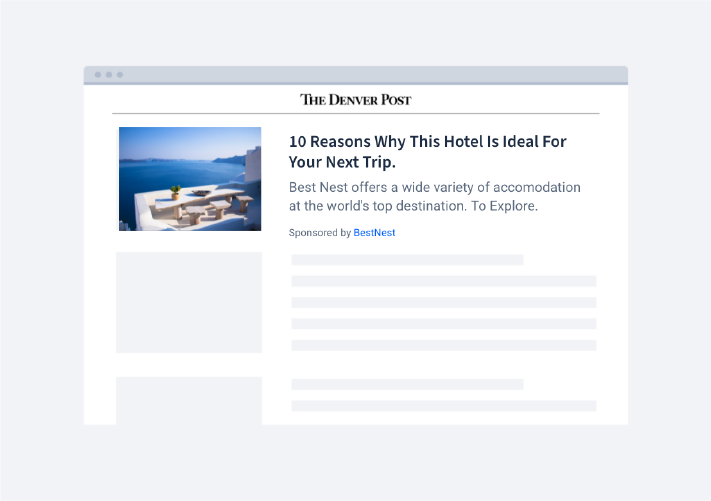
2. In-Ad Native Advertising
This format uses the elements of a native ad, including image, headline, body, and brand logo. In-ad native ads occur within display inventory of a given page. Advertisers can achieve greater reach, while still using the elements that make native ads so engaging, when native inventory is limited.

3. Content Recommendation Widgets
Content discovery widgets are typically found at the bottom of an article. Largely seen as a means for publishers to drive traffic and monetize their content, some advertisers see value in reaching a wide audience in a cost-effective manner through content recommendation.
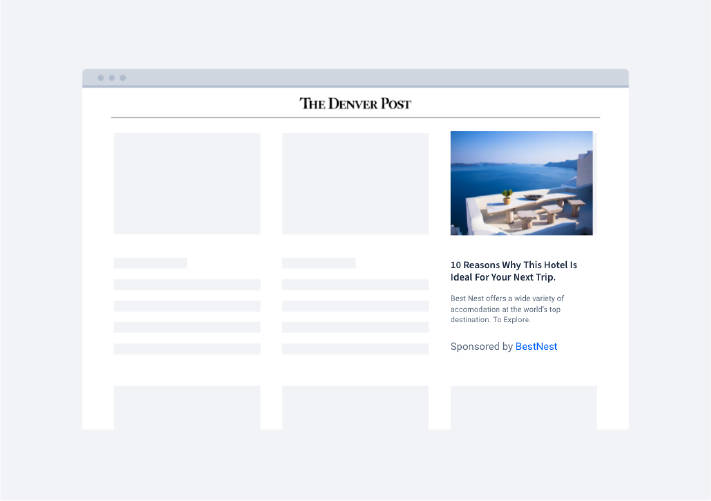
6 Tips For Native Ad Creative That Drives Engagement
You know the native ad formats available, but it’s essential to know how to make your native ads stand out. Here are 6 essential tips for developing native ad creative that will drive engagement.
1. Write a Compelling Headline
The headline for a native ad is often the first part of the ad that a user will see and read. Given this, you’ll want it to capture and hold attention. There are a few ways you can ensure your headline has an impact.
Nothing prompts interest quite like a big, bold question. Draw your audience in by posing your headline as a query or concern that resonates with them. Just make sure your content actually answers the question posed, otherwise ad clicks won’t convert into meaningful interactions.
Many headlines make complete sense to product experts, but very little to the average consumer. If an audience doesn’t understand your message, they are unlikely to click on your ad. It’s important to ensure your native ad content distills your brand’s messaging into digestible content that resonates with your target audience.
2. Leverage the Description to Drive Click Throughs
One of the biggest benefits of native ads is that you can summarize your content beyond just the headlines. In the description (or subheading), you can further clarify the value that users will find in your content, should they click through.
To craft the description in your native ad, you can draw from the content itself. Repurpose a line from the blog or landing page that you’re driving users to. Just ensure that the description summarizes what your audience will take away from the content. If your headline is posed as a question, provide the answer to that question right there in the description.
3. Write Native Ad Copy in Natural Language
When native ad copy is complex, long, or has an academic tone, you’ll lose the interest of users who scroll by. This is because audiences want to be communicated with in an authentic, natural way.
Native ad copy should be written in a friendly, conversational, and accessible tone. By addressing readers as if you were simply chatting with them over a cup of coffee, you’ll create a sense of relatability and engagement that just can’t be achieved with formal language.
4. Include a Clear Call to Action (CTA)
Native ad formats work really well for building brand awareness, but they can also drive click throughs. Many brands leverage native advertising’s high click-through rates for direct response campaigns.
Regardless of the type of campaign, it’s best practice to include a clear CTA. It should be explicit about the action you want users to take. For example, if your native ad is driving to a landing page for a free trial, the CTA should describe that. In this scenario, the CTA could be, “click to start your free trial.”
5. Design Native Ads With Inclusivity in Mind
Be sure to take an inclusive design approach to your ad’s visual look. The goal of inclusive design is to provide the best user experience for as many people as possible. Rather than a one-size-fits-all approach, inclusive design aims to create content that is accessible to a diverse range of users.
This is done by addressing the common barriers that users face, the environments users may be in, as well as providing different ways that users can engage. For example, low contrast images may be difficult for some users to read. The best way to go is dark colours on light colours, or light on dark.
6. Drive To High-Quality Content
It’s best practice to build your native campaign around an engaging piece of content that provides value to readers. Your native ad should drive to a blog, landing page, or another piece of content that is enriching for your audience.
The content should answer a question, provide valuable information, or entertain. By providing genuine benefits to your audience, you’ll win their trust and foster a positive relationship with them. Whether it’s a clever tip or an entertaining video, the key is to make your content memorable and worth sharing.
Get Started With Native Advertising
At its core, native advertising describes the intersection of beautifully customized native content delivery and the power of programmatic technology. Regardless of which native ad format you choose, leveraging native advertising can help you build audiences, drive an action, or promote content marketing efforts. This ad format is highly scalable and beneficial to a multi-channel strategy.
Want to run exceptional programmatic campaigns? Request a demo to learn more about StackAdapt.
